
School sustainability in focus
From targeted initiatives to a facilities bond, schools are forging ahead with sustainability efforts
CTE center stage
Success rates and the need for a highly skilled workforce are fueling support for CTE







From targeted initiatives to a facilities bond, schools are forging ahead with sustainability efforts
Success rates and the need for a highly skilled workforce are fueling support for CTE








We’ve simplified procurement, saving you time and money by helping you:
Streamline RFP document creation, solicitation, and bid review
Expand vendor networks and promote vendor diversity
Improve communication and bid compliance
Boost cross-departmental collaboration and regulation
Manage contracts, insurance, certifications, and more



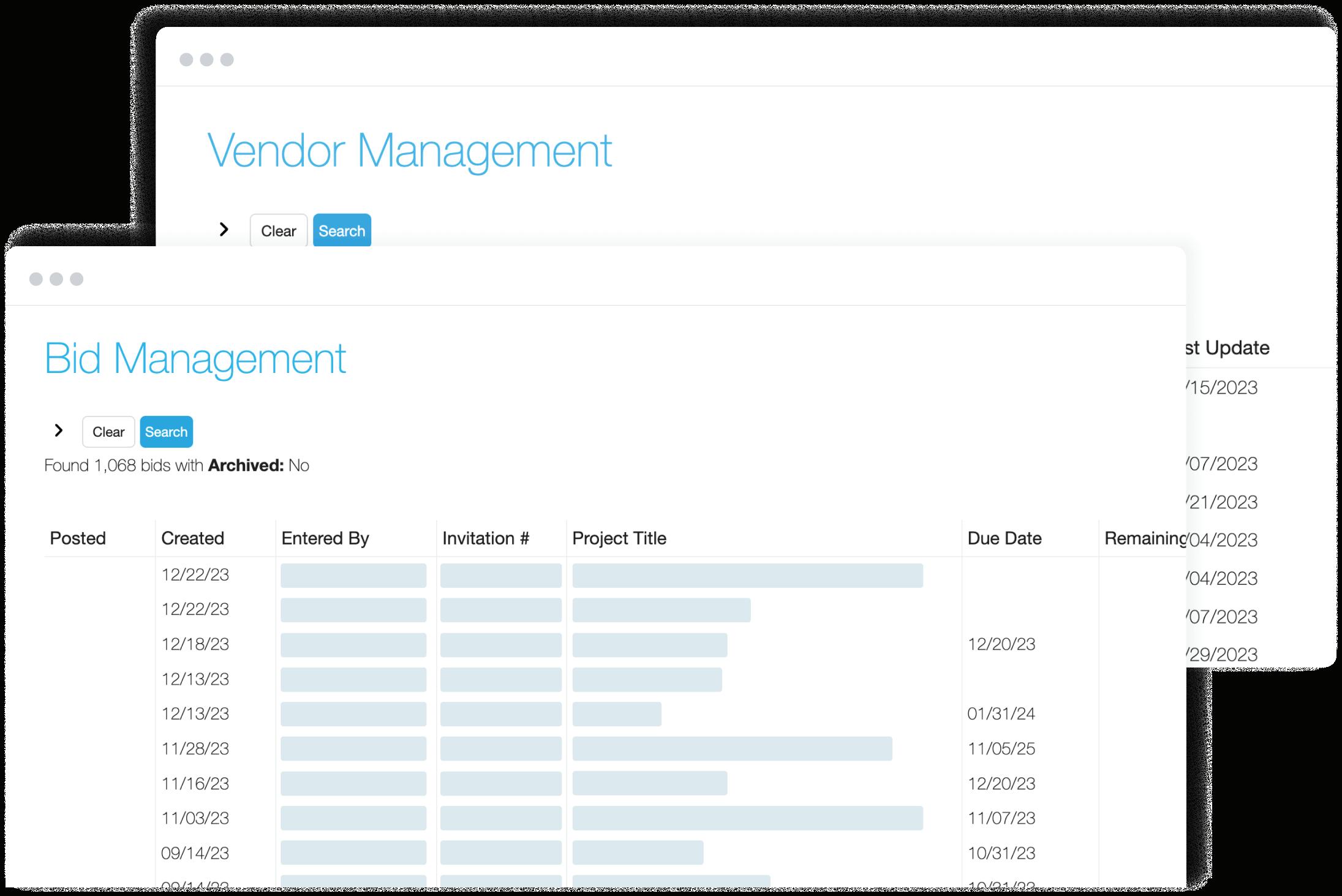
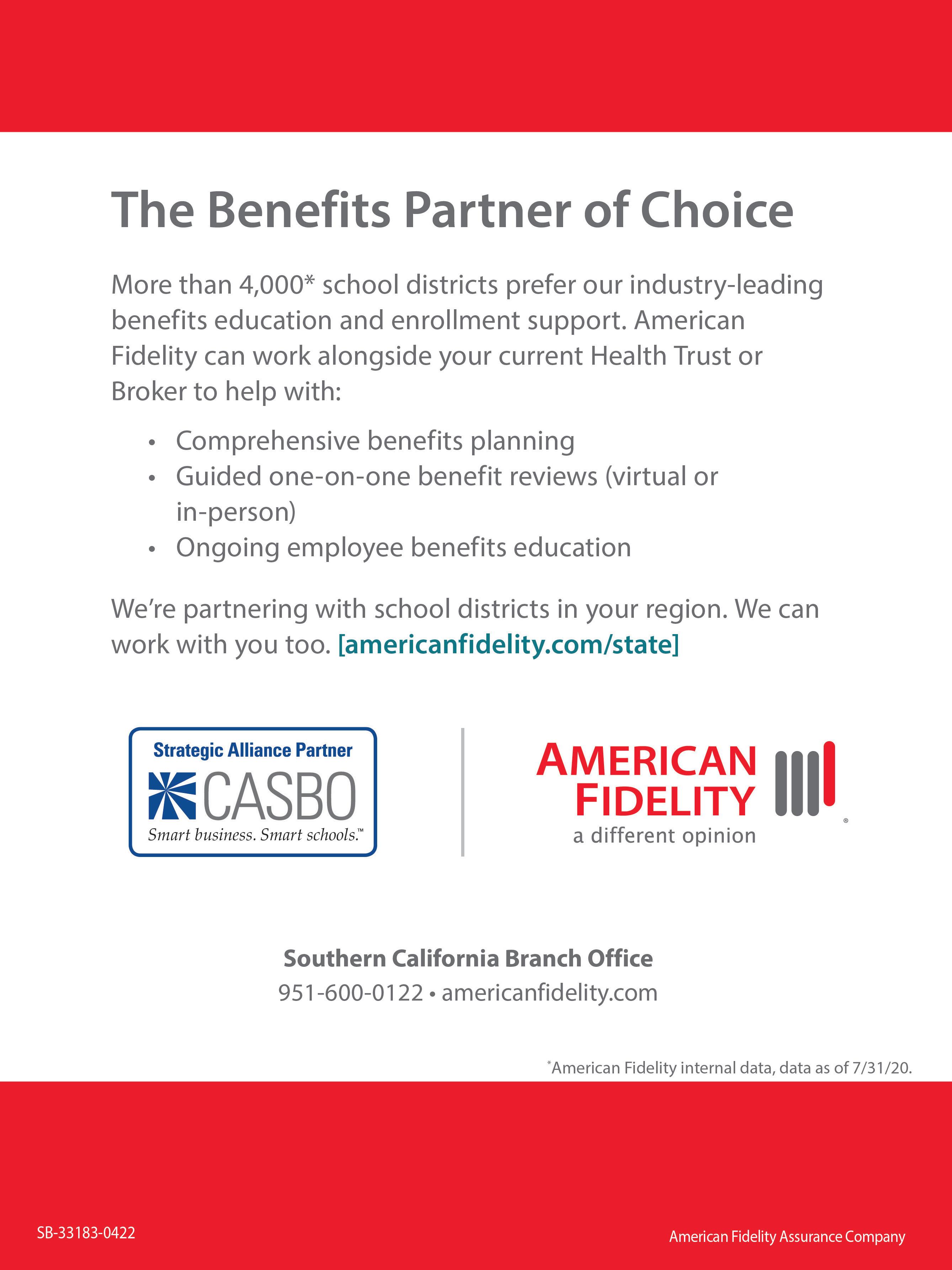
9 CHECKING IN Culture as the catalyst for educational impact
Tatia Davenport
11 BOTTOM LINE
CASBO is the antidote to imposter syndrome
Eric Dill
13 GUEST FEATURE
The defining elements of a winning culture
Michael Mankins
17 IN FOCUS MEMBER
Cynthia L. Carrillo
19 IN FOCUS ASSOCIATE MEMBER
Gina La Bier
22 INTERVIEW
Vickie F. Echols
Educator, author weighs in on how AI is transforming education
Julie Phillips Randles
34 COVER FEATURE
School sustainability in focus
From targeted initiatives to a facilities bond, schools are forging ahead with sustainability efforts
Jennifer Snelling
40 FEATURE CTE center stage
Success rates and the need for a highly skilled workforce are fueling support for CTE
Jennifer Fink

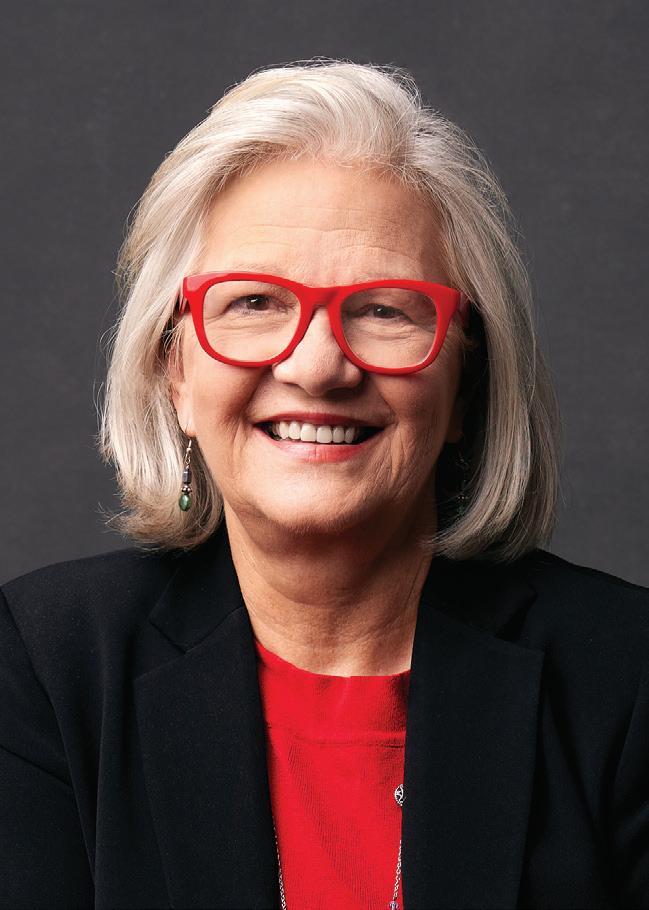

The California Association of School Business Officials is the premier resource for professional development in all aspects of school business. Founded in 1928, CASBO serves more than 24,000 members by providing certifications and training, promoting business best practices, and creating opportunities for professional collaboration. CASBO members represent every facet of school business management and operations. The association offers public school leaders an entire career’s worth of growth opportunities.
As the recognized authority in California school business, CASBO is a member-driven association that promotes ethical values; develops exceptional leaders; advocates for, and supports the needs of, members; and sets the standard for excellence through top-quality professional development and mentorship, meaningful collaboration and communication, and unparalleled innovation.
For the past 16 years, CASBO has been dedicated to the organizational planning discipline as a method for guiding the association into a successful future. Last year, the association completed its sixth such plan, CASBO by Design 2.0, a living, breathing document that guided the association in its long-term planning process, which is grassroots in nature, invigorating in procedure and motivating in outcome. Work on our next strategic plan began in 2021.
CASBO has long been committed to organizational planning because the approach has consistently helped the association envision its future and determine the clear steps to get there. The road map that strategic planning provides has allowed CASBO to remain focused on its unique mission, goals and objectives and to respond effectively to a continually changing environment.
For more information on CASBO by Design, visit casbo.org > CASBO + You > About > CASBO By Design.
Stay connected casbo.org
Publisher Tatia Davenport
Features editor
Julie Phillips Randles
Contributors
Jennifer Fink
Jennifer Snelling
Art director
Sharon Adlis
Ad production
Tracy Brown
Advertising sales manager Cici Trino Association Outsource Services, Inc. P.O. Box 39 Fair Oaks, CA 95628 (916) 961-9999
CASBO OFFICERS
President
Eric Dill
Carlsbad Unified School District
President-elect
Aaron Heinz
Colusa County Office of Education
Vice president
Katie Hylton
San Bernardino County Superintendent of Schools
Immediate past president
Tina Douglas
San Dieguito Union
High School District
consent of the publisher.
Published September 2024
Let’s




Culture is the driving force behind performance. In both business and education, the right culture isn’t just a perk – it’s a competitive edge. The most successful organizations, from Ford to Southwest, have used culture to fuel their success. Schools can do the same.

Take sustainability. Schools that truly integrate environmental responsibility into their culture aren’t just following trends; they’re shaping future leaders who live by these principles every day.
The same principle applies to AI in education. Schools with a culture of innovation and adaptability are better positioned to harness AI, not just as a tool but as a means to enhance learning, engage students and prepare them for the future.
The bottom line is this: Culture works when it drives results. Whether it’s sustainability or AI, the ultimate measure is whether these efforts improve outcomes for students and the community.
As you explore this issue, consider how the culture within your organization can impact the success of any initiative – whether it’s addressing declining enrollment, navigating difficult budget decisions, focusing on sustainability, harnessing AI or just about anything else.
The future belongs to those who understand the power of culture. z z z
Tatia Davenport CEO


When it comes to taking on leadership roles, self-doubt can be a significant barrier. I’ve met many top-notch school business professionals who shy away from leadership positions, thinking they’re not ready or good enough.
Highly qualified individuals often obsess over what they don’t know, which makes them undervalue what they do know. This undermines their confidence and keeps them from applying for promotions or new roles because they assume others are more qualified.
However, the people who truly understand the complexities of school business and recognize there’s always more to learn are exactly the ones I want to hire. Those who fear making mistakes often produce the best work. They are curious, they question themselves, they search for answers, they worry that they missed something, they double-check their work and then check it one more time to be sure. They have never uttered the dreadful phrase, “Fake it till you make it.”
I’ll take an honestly uncertain employee over a confidently clueless one any time.
Building a peer network is a fantastic way to build your confidence. Through mutual support and feedback, you’ll learn that others value your knowledge and experience. When colleagues reach out to you for help, that’s your sign that you’re already a leader.
Another way to validate your true potential is to keep a list of your accomplishments. While your job title can hint at your duties, a resume that highlights your skills and achievements will make you stand out, especially when up against someone with the same job title. Fortunately, CASBO has many ways to help you fortify your self-assurance, and the barrier to entry is low: Just show up. We’re not a creepy cult or multi-level marketing scheme. We’re just a group of school business people who want to excel at what we do and help others do the same.
Stay updated. Continuously improve your skills. Participate in local and state workshops. Take online courses at School Business University. Earn a certification. Expand your professional network. Volunteer in your local CASBO section. Join a Professional Council. Participate
in statewide roundtable discussions. Sharing your knowledge is not just beneficial for others – it’s a powerful way to reinforce your own learning.
Do these things and you might just realize you’re way better than that nagging voice in your head thinks you are. z z z

Eric Dill President
As a Third-Party Administrator (TPA), SchoolsFirst Plan Administration expertly manages the day-to-day responsibilities of California school employee retirement plans.
• We process your employee contributions securely with a remittance turnaround of 24 hours the industry.
• As a local and not-for-profit organization, we’re committed to delivering personalized service to you at all times.
• We provide complimentary financial education workshops, programs, articles and consultations.
We ensure a smooth transition by managing the entire process from start to finish.
CALL (800) 462-8328, ext. 4727
rpa@schoolsfirstfcu.org


By Michael Mankins
A company’s culture can have a powerful impact on its performance. Culture is the glue that binds an organization together and it’s the hardest thing for competitors to copy. As a result, it can be a lasting source of competitive advantage. Take these examples:
• Kent Thiry builds a values-focused culture at DaVita and transforms the company from a laggard to the world’s leading provider of kidney dialysis services.
• Alan Mulally creates a “workingtogether” spirit at Ford Motor Company that focuses and reenergizes the automaker, reversing a decades-long slide in market share.
• Herb Kelleher fosters a culture of employee empowerment and cost containment at Southwest, enabling the airline to become one of the world’s most admired and profitable carriers.
• Steve Jobs builds a challenging culture at Apple – one where “reality is suspended” and “anything is possible” – and the company becomes the most valuable on the planet.
But culture doesn’t always produce great results. In fact, when my colleagues at Bain & Company surveyed more than 400 senior executives from large global companies last year, they found that
fewer than one in four felt that culture was very effective in supporting business performance at their company. The majority felt that their organization’s culture was largely disconnected from what it took to win.
Why this disconnect? In our experience, too many companies think of culture as a way to make people feel good about where they work and not as a way to help employees – hence the organization – perform better. Highperforming companies think about culture differently. They know that winning cultures aren’t just about affiliation; they are also unashamedly about results.
Our research suggests that winning cultures are comprised of two interrelated and reinforcing elements. First, every high-performing company has a unique identity – distinctive characteristics that set it apart from other organizations. These characteristics give employees a sense of meaning just from being part of the company. They also create passion for what the company does.
Southwest Airlines is the classic example. Under Herb Kelleher’s leadership, the company became known for its sense of humor, irreverence and focus on the employee. This unique identity not only made flying Southwest fun for passengers, it made its labor force more productive. Flight attendants, not cleaning crews, cleaned aircraft between flights, reducing time at the gate and improving on-time performance. Maintenance workers routinely devised better ways to maintain Southwest’s fleet of 737 aircraft, lowering costs and improving up-time.
The company’s unique identity reinforced many of the elements that were critical to Southwest’s strategy, such as keeping costs low. As a result, Southwest is the world’s largest low-cost carrier and is consistently among the most profitable airlines in the world.
Culture is more than just a unique identity, however. The best performing companies typically display a set of performance attributes that align with the company’s strategy and reinforce the right employee behaviors. Our research revealed seven of these:
1. Honest. There is high integrity in all interactions, with employees, customers, suppliers and other stakeholders.
2. Performance-focused. Rewards, development and other talentmanagement practices are in sync with the underlying drivers of performance.
3. Accountable and owner-like. Roles, responsibilities and authority all reinforce ownership over work and results.
4. Collaborative. There’s a recognition that the best ideas come from the exchange and sharing of ideas between individuals and teams.
5. Agile and adaptive. The organization is able to turn on a dime when necessary and adapt to changes in the external environment.
6. Innovative. Employees push the envelope in terms of new ways of thinking.
7. Oriented toward winning. There is strong ambition focused on objective measures of success, either versus the competition or against some absolute standard of excellence.
Few organizations exhibit all seven of these attributes. But high-performing organizations typically spike on the three or four that are most critical to their success.
Take Ford Motor Company. When Alan Mulally became CEO at Ford in 2006, the company operated in regional silos. As a result, the Ford Focus in Europe was different from the Ford Focus in the Americas. The company had too many brands, too many platforms, too many disparate parts, too many suppliers, and so on.
To turn the automaker around, Mulally focused on building One Ford – a leadership model based on collaboration, innovation and a desire to win (again). With time, leaders at the automaker started working together to simplify and streamline the company globally. They rationalized brands, consolidated automotive platforms, made options and parts more common and designs more innovative. In just three years, Ford went from losing share and
money to gaining share and making money.
Culture plays a vital role in performance. Winning cultures treat performance as an explicit output and foster an environment that is conducive to generating the best possible results – not just for employees, but for customers, suppliers, and, yes, even shareholders. z z z
Michael Mankins is a leader in Bain’s Organization and Strategy practices and is a partner based in Austin, Texas. He is a co-author of Time, Talent, Energy: Overcome Organizational Drag and Unleash Your Team’s Productive Power.
A version of this article appeared in the December 17, 2017 issue of Harvard Business Review. Reprinted with permission.
© 2017 Harvard Business School Publishing Corp.

Grow your skills, knowledge and professional network at this one-day event for aspiring school leader designed to transform careers.
Get tools and strategies to transform your career through 8 sessions covering core school business competencies, such as: Plus, earn 6 continuing education units (CEUs) and enjoy complimentary breakfast, lunch and resources included with the price of registration.




Piper Sandler is a leader in providing financial services to California public schools. We are committed to providing access for communities to participate in their local bond offerings. We guide school districts across the state on the construction and modernization of school facilities, solar equipment projects, school site acquisitions and upgrading of technology equipment. Our team assists school districts on navigating the complex general obligation bond process from start to finish.
General Obligation Bonds | Certificates of Participation | Mello-Roos/CFD Bonds Interim Project Financing | Debt Refinancing/Restructuring | Tax & Revenue Anticipation Notes
Rich Calabro MANAGING DIRECTOR +1 310 297-6013 richard.calabro@psc.com
Halina De La Rosa ASSOCIATE +1 310-297-6033 halina.delarosa@psc.com
Jin Kim MANAGING DIRECTOR +1 310 297-6020 jin.kim@psc.com
Celina Zhao ASSOCIATE +1 310 297-6019 celina.zhao@psc.com
Ivory Li MANAGING DIRECTOR +1 415 616-1614 ivory.li@psc.com
Mark Adler MANAGING DIRECTOR +1 310 297-6010 mark.adler@psc.com
Christen Gair MANAGING DIRECTOR +1 310 297-6018 christen.gair@psc.com
Pam Morris-Hammer OFFICE SUPERVISOR +1 310 297-6023 pamela.hammer@psc.com

By Jennifer Snelling

Cynthia L. Carrillo knows what it’s like to feel at home in a role and a community. As the director of human resources (HR) for Lompoc Unified School District (LUSD), she wants every single employee to experience that feeling, and she helps them get there through a dedication to relationship building.
Carrillo served LUSD’s HR director for 12 years, and recently returned to the district after serving in the same role at another district. Each day, she supports the district by building trust, ensuring effective communication and seeking innovative ways to address the needs of all stakeholders. Her biggest challenge – and one she succeeds at –attracting and retaining qualified applicants.
“As a human resource professional, I’m able to make a difference in the lives of employees every day,” says Carrillo. “I strive to connect with employees, support and motivate them, and create a positive work culture where employees feel valued and respected.”
Carrillo is proud that the assistance she provides has an impact. For example, an employee from her previous district recently shared that she was grateful to have the opportunity to work with Carrillo because she challenged her, respected her and provided opportunities for growth. She recalls that
Carrillo always took time to talk with her whenever she had a problem. That personal touch made the employee feel valued.
Carrillo has worked as a public education HR professional for 28 years. She discovered her passion for HR when a colleague at the district office recognized her skills and recruited her to human resources. She later returned to school to earn a bachelor’s degree in business administration, and then an MBA in business management and strategy.
In addition to her educational accomplishments, Carrillo has taught adult education classes – her second career of choice.
“Working with adult students was an amazing and humbling experience,” Carrillo says. “Similar to working in HR, I had the opportunity to teach, motivate and inspire some amazing students.”
She also enjoys living and working in the Lompoc community. “I never imagined I would be hired twice for the same job, but when we moved to Lompoc 17 years ago, we had six young kids and I quickly realized that Lompoc is a great place to raise a family. As a new director, I took every opportunity to learn and grow. As my leadership skills grew, so did my belief that a good leader leads by example, and that’s what I try to do every day.”
That means never asking her team to do something she wouldn’t do herself and respecting the idea of servant leadership. “As a seasoned director, my core values remain unchanged. I have high expectations for myself and my team, and I work diligently to establish and improve HR processes, while ensuring trust and integrity in all that we do.”
Carrillo first became involved in CASBO over 20 years ago through human resources monthly brown bag lunches. She has served as the HR Professional Council Chair for the Southern Section Executive Board and, last year, was the section president. She currently serves as the vice president of education for CASBO’s Tri-County Section.
“I hope that I can inspire and motivate others to take advantage of opportunities to learn and grow. I’m grateful that CASBO has provided me with exciting opportunities to share my knowledge and experience.” z z z
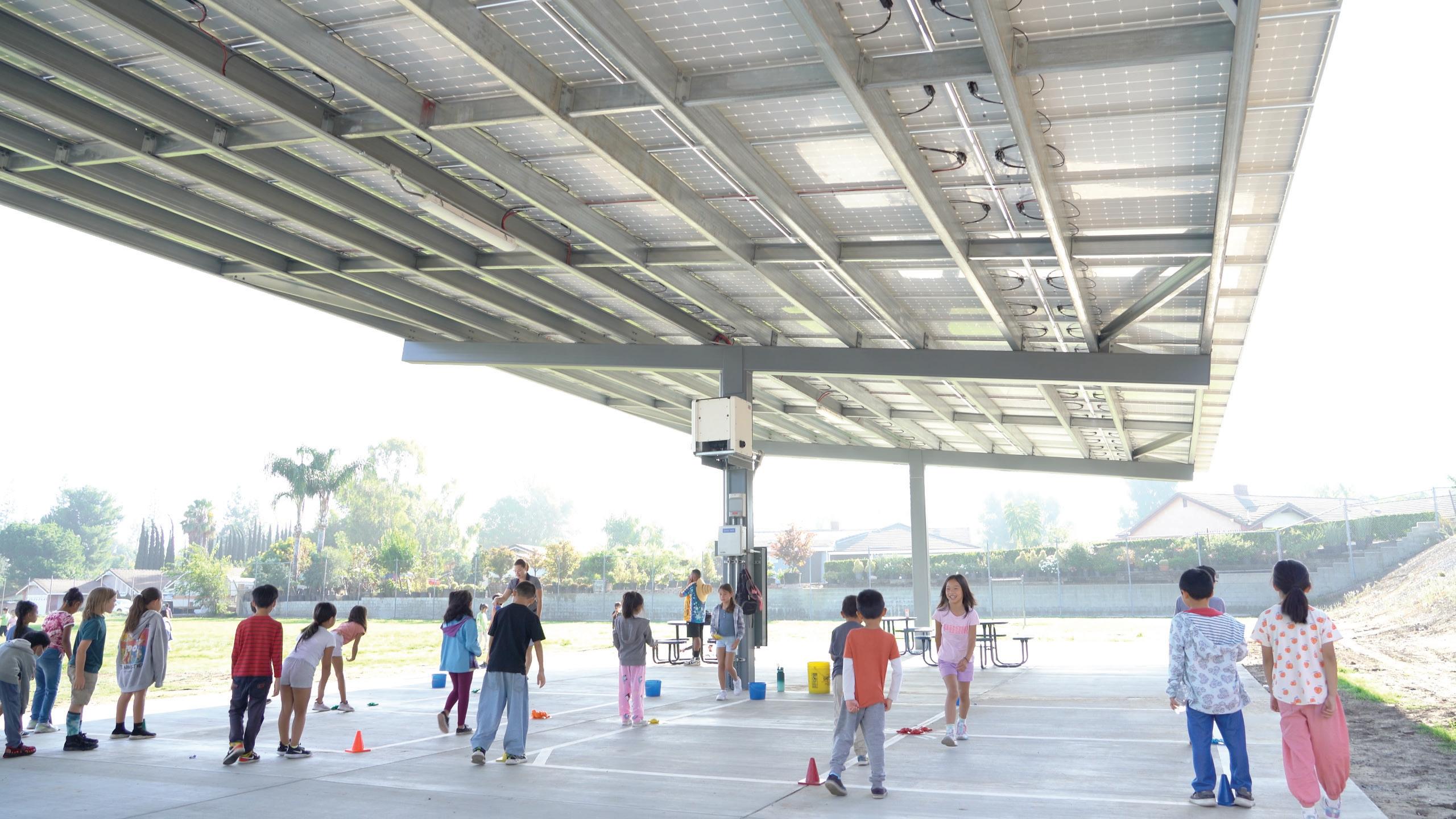
Horace Mann is a long-time CASBO corporate supporter, and we’re dedicated to supporting you and your educators with:
• auto and home insurance that comes with special benefits and discounts for educators;
• life insurance with preferred rates for educators; and
• retirement solutions to help you plan for what life looks like outside of the classroom one day.
And if your employees struggle with things like student loan debt, finding classroom funding or becoming more financially secure, we have programs and workshops to help with that, too.
Sound like something worth exploring? Our knowledgeable, friendly representatives are standing by ready to answer your questions.
To learn more or get a quote, visit horacemann .com
Horace Mann Insurance Company and its affiliates underwrite Horace Mann auto and home insurance. Not all discounts and benefits available in all states. Horace Mann Life Insurance Company underwrites Horace Mann life insurance products. Horace Mann Service Corporation and certain of its affiliates (Horace Mann) enter into agreements with educational associations where Horace Mann pays the association to familiarize association members with the Horace Mann brand, products or services. Contact association.relations@horacemann.com for more information. We may be new to you, but educators are not new to us.
AM-C04767 (Oct. 23)


She’s passionate about her role as a solution provider
By Julie Randles

by
Gina La Bier, director of market development for Meteor Education, has spent the last 13 years putting smiles on teachers’ and students’ faces. After all, that’s the natural outcome when she helps clients focus on the instructional intent of education environments, making sure classrooms and other school buildings help teachers and students be as productive – and successful – as possible.
“I love seeing kids who walk into their new classroom, library or cafeteria and are excited to go to school every day,” La Bier says. “We take a top-down approach, from instructional needs to tools. Yes, we sell furniture, but it’s more than that. We focus on the instructional intent of the room.”
Meteor Education, a CASBO Associate Member, designs and delivers collaborative, flexible learning environments that accelerate student engagement. Meteor’s local teams, educator experts and design specialists partner with school districts to create social classrooms and other custom spaces that empower educators to develop futureready students. Meteor also trains teachers, helping them maximize the positive effect of each environment and tools so districts can measure the impact on student learning and the value to their communities.
La Bier first connected with Meteor as a client when she was working in construction management. Impressed with Meteor’s solutions and culture, she inquired about employment openings and was hired as a project manager.
After two-and-a-half years, Meteor’s CEO suggested she take on a sales role – a facet of the business La Bier says she had no interest in – until he reminded her that sales is all about providing solutions, something she was already doing for customers.
In 2017, La Bier became Meteor Education’s first managing director covering Northern California. And in 2020 she took on her current director role.
“I want to see kids have choices inside the classroom. That’s what excites me and what keeps me doing what I’m doing,” La Bier says.
It’s a passion that was sparked when her son was diagnosed with ADHD and was frequently sent to the school office because of his behavior. “We were told he was a bad kid, but it was really because he needed to have choices to channel his energy in the classroom.”
Today, La Bier uses her knowledge of how an environment can negatively impact a child to help others have a positive experience.
She spends a typical day collaborating with clients and Meteor designers, project managers and project coordinators on projects that range from single classroom makeovers to revamping learning environments for entire schools or districts. Some projects, like a full district overall, can take three to five years to complete because the Meteor team takes time to help clients reimagine what education means today, and guides them in creating district standards that meet their learning goals.
The plan for any refresh includes a focus on teacher and student needs, environmental applications, surveys, standards and equity considerations. Updates for all projects are typically tackled in the summer so they’re ready to welcome kids in the new school year.
La Bier holds an associate’s degree from Phillips Junior College-Condie, a Construction Management Certification from California State University, Hayward, and is an accredited Learning Environment Planner and member of the board for A4LE – Northern California.
When she’s not delighting students, you’ll find La Bier on hiking trails in Sacramento with her husband, reading, painting and spending time with family. z z z









by Brian

By Julie Phillips Randles
Embracing change is a strength for most school leaders, but artificial intelligence’s (AI) influence on education and society is hitting with the force of a tidal wave. Wrapping your arms around such a sea change can feel impossible.
Vickie F. Echols knows what it feels like to change course. Currently a certified school and district transformation coach, she’s spent the past three decades serving as a teacher, campus administrator, elementary school principal, director of an education foundation and a communications director.
And AI is worth the adoption effort, she assures. It’s the assistant you’ve always craved, a magic wand that produces more time for overtasked leaders. You can even use it to write an invita-
tion for your staff to join you in exploring ways to use the tool in your district, and then brainstorm the best questions to ask in that session. According to Echols, AI can help with collaborative decisionmaking, supportive relationships and trust, personalized professional learning, data analysis and school improvement, and parent and community engagement.
She calls it the journey from burnout to balance. “You can harness the power of AI to regain control of your workload, reduce stress and cultivate a healthier, more sustainable approach to your professional life,” she says. “It’s time to acknowledge this reality and work toward a future where educators don’t just survive – they enjoy the journey and thrive!”
Echols is so pumped about the possibilities, she wrote AI for School Leaders: 62 Ways to Lighten Your Workload and Focus on What Matters , to be published by the International Society for Technology in Education (ISTE) in October.
It’s quickly morphing from a choice to a necessity, as 58% of students are using generative AI tools, she says, “but many schools don’t have clear policies on how to use AI ethically and responsibly.”
And she’s diving into all of it with a joy that’s contagious. “Finding balance and maintaining well-being are more important than ever,” Echols tells the LinkedIn community. After all, wellness is at the base of what motivates her in
The first step in bringing AI into schools is like any other initiative –establishing a solid foundation with a group of curious and caring critical thinkers before scaling up.
this drive to help school leaders find their footing with AI.
Echols holds a bachelor’s degree from Texas A&M University and a master’s degree in education from James Cook University in Australia, She lives in Fairview, Texas, where she’s currently a consultant with the international nonprofit Wellness for Educators.
CASBO sat down with Echols to explore her enthusiasm for AI’s impact on school business and education’s future.
What’s something you thought you knew that you found out you were wrong about?
Although AI isn’t new, I paid little attention to it until ChatGPT – the free platform for generative AI – came out in 2022. My husband saw the announcement and mentioned that I ought to check it out; and I’ll admit that as I began using what they’re calling a “large language model,” I was surprised at how easy it was to use.
As a fan of science fiction, I always liked the idea of having an assistant, like the robots in “Star Wars” or Rosie from “The Jetsons” (showing my age here). But I didn’t think I’d get close to using one anytime soon. Sure, the interactions are still language on the screen – but I think we’re getting close!
The new generative AI platforms are incredibly user-friendly and come with robust support, making them very accessible. Full transparency – I’m an early adopter and learning as I go, so I think anyone can learn how to use the chatbots very easily.
Initially, I questioned how well AI tools could work in a school setting. However, after playing around with it and researching what it can do, I became so convinced this tool would
help educators, I decided to write a book about it.
From compiling reports to reviews of educational literature or simply a reply to an email, AI can automate time-consuming processes, increasing efficiency and productivity. It’s almost like having R2-D2 by your side!
What are the first steps school leaders should take when they begin to bring AI to their schools and district offices?
The first step in bringing AI into schools is like any other initiative – establishing a solid foundation with a group of curious and caring critical thinkers before scaling up. I remember when Google for Education first became available to school districts. I was an instant convert, seeing the potential to transform collaboration, communication, teaching and learning. But convincing my team was like pulling teeth. There was a lot of skepticism and resistance.
We formed a task force of interested users, along with tech coordinators and administrators, to explore the possibilities and challenges of the new tools. It was a slow process, but eventually, we were able to demonstrate its value and roll it out safely districtwide.
This process will also work for launching generative AI. Start small with a focus group to uncover concerns and generate ideas. Learn together while setting up the necessary guardrails. This includes developing a comprehensive AI policy that addresses data security and privacy.
It’s a big undertaking, I know. But the good news is there are excellent resources available, such as the guidelines (bit. ly/3WS1OP9) from the Department of Education’s Office of Education Technology. Organizations like ISTE also provide valuable insights. By keeping the ISTE Standards (ISTE.org/standards) at the
forefront, educational leaders have a road map to navigate the complexities of AI integration thoughtfully and responsibly.
Then, focus on professional development. Build a shared understanding of AI’s potential and limitations. Remember, it’s about taking a measured approach, learning as you go and ensuring AI enhances, rather than replaces, human expertise.
Leaders who use generative AI tools will need to use critical thinking skills to determine if the information provided is accurate, and to refine prompts, for example. How else does critical thinking come into play with AI, and what other skills do leaders need to effectively use AI?
AI can offer some excellent suggestions, but what separates a good suggestion from great implementation? That’s where critical thinking comes in. Think of it like planning a party. AI can provide ideas for the menu, recipes, table decorations, games, invitations or music. But your skill in selecting the freshest ingredients, adjusting the seasonings and songs, and ensuring a fun time makes all the difference.
When using AI, remain analytical. Scrutinize the information to make sure it’s accurate, relevant and applicable. Because generative AI is known to “hallucinate” or make things up, write the prompts with specificity, tweak the AI’s suggestions and always double-check for accuracy.
Another important skill to learn is how to write an effective prompt, such as a question or a statement telling the chatbot to create or refine something useful for you. Prompt engineering is simply telling the machine exactly what you want. You can type, or copy and paste, or even speak into the AI platform.
Think of the interaction as a conversation. With a little practice, you’ll see how AI can be a valuable (and friendly) tool for learning many new skills – including how to use an AI assistant.

I dive deeper into these issues in the book, by offering more practical solutions, examples and specific cautions.
How can school leaders ensure that AI is used ethically and responsibly in their schools?
Generative AI offers great potential, but a blend of optimism and caution is needed. Here are six steps school leaders can take to address concerns and ensure a successful AI rollout.
1. Safety First. Revise your Technology Use Policy to incorporate the use of AI. Standards and protocols are crucial to ensure AI tools are used safely.
2. Data Guardianship. Develop a comprehensive data protection plan that adheres to all regulations. Protecting student and staff data is paramount.
3. Humans Still Lead. Don’t let AI replace human judgment. Technology is a powerful tool, but critical thinking skills continue to serve as essential to navigate these new tech tools.
4. Reduce Bias. Regularly analyze AI systems for potential biases to ensure fair and equitable use for all.
5. Promote Access. Make sure AI tools are available for all – with robust and relevant training.
6. Accuracy Matters. Continuously assess AI systems for accuracy and reliability. It’s best to use multiple resources when designing for a professional or academic task.
I dive deeper into these issues in the book, by offering more practical solutions, examples and specific cautions.
Understanding and addressing these risks is how we harness the power of AI.
What are some examples of how AI can make school leaders’ jobs easier or more efficient?
In today’s educational landscape, a powerful synergy is emerging between educators and AI. While AI excels in data
analysis or rapid information processing, educators remain irreplaceable in areas like social-emotional intelligence and ethical decision-making. By understanding this interplay of strengths, we can unlock the full potential of AI to empower educators and ultimately enhance student success.
Here are some examples of how AI can help, along with a few prompts to try out:
1. When it comes to collaborative decision-making , AI can help with the process of team building, identifying problems, developing creative solutions and analyzing different perspectives. This prompt sets the stage with some interesting discussion questions:
“Generate a set of five reflective prompts and questions for a department team to discuss regarding… [insert topic, i.e., working as a team]. Begin with a few questions to help the group connect.”
2. Building supportive relationships and trust is an ongoing process. AI can suggest ways to improve communication and strengthen a sense of wellness, which not only keeps everyone happy but also helps you keep great people on board! Try this prompt to help write an email. Remember to omit personal information.
“Create a summarizing email to an employee from me, as their supervisor, who has just conducted a meeting on [insert date]. Summarize the notes: [insert notes without identifying information]. Write with a tone of gratitude and encouragement.”
3. AI is also valuable for personalized professional learning. It can act as a learning coach, offering guidance, recommending relevant resources and more.
“Ask me three to five questions about what I want to learn as a: [insert your role]. Then, use my answers to generate a list of professional development resources for

school leaders related to the topic. Focus on the latest strategies and best practices to enhance our leadership capabilities and operational effectiveness.”
4. AI can help with data management by analyzing information faster than humans. For example, it can summarize anonymized staff surveys and meeting transcripts at warp speed. It streamlines processing, revealing key trends, issues and data-driven insights. Try this prompt with a few survey responses.
“Analyze these open-ended responses from a survey designed to assess perceptions of [insert target audience, i.e.,

students, teachers]. Note common themes, positive and negative responses, and any suggestions provided in the comments. Participants were asked: [insert questions]. The responses included these comments: [insert comments].”
5. AI can also help to enhance family and community engagement by suggesting ways to organize community events, create your social media posts or strengthen bonds through a variety of communication channels. Let it help with the wording of handwritten notes.
“Write a heartfelt thank you message to give to a donor who provided breakfast for a meeting. Write with a professional tone and include these details: [insert].”
What advice would you give school leaders who are hesitant about adopting AI in their schools?
Caution is understandable, but as I mentioned earlier, start small with a focus group to uncover your concerns and generate ideas. Learn together while setting up the necessary guardrails.
Another helpful strategy is to connect with professional organizations that can help guide the process. Try out this prompt to identify those who can share their experiences and support your journey of integrating AI. Add details to the prompt to make it more specific to your role.
“List national and state professional organizations, including CASBO, that can help school leaders with partnerships and guidance on integrating AI into education. Include links to websites and other resources available.”
How will the role of a school leader need to adapt as AI becomes more prevalent in education?
Experts in the literature say we’re on the cusp of another tech revolution, similar
When a school district’s plan to secure new Chromebooks with federal funding for its K–12 students was nearly derailed by microchip shortages, ODP Business Solutions delivered.
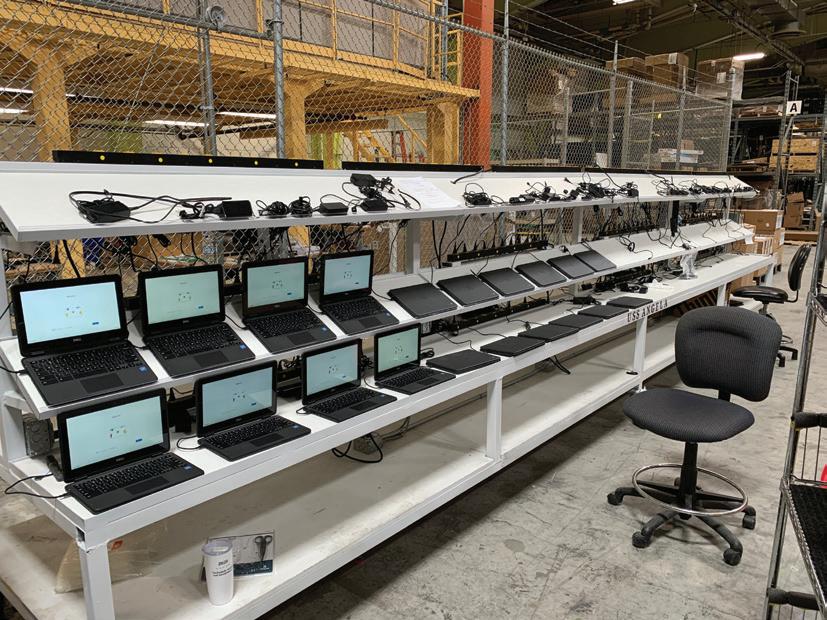

The school district was set to purchase $6.5 million of new Chromebooks for students in 2021; however, 2020’s global manufacturing strain caused a shortage in microchips that the original equipment manufacturer (OEM) needed to build the Chromebooks. This disruption meant the OEM would miss the district’s deadline, leaving nearly 15,000 students and teachers without vital technology.

Fortunately, ODP Business Solutions already had a solid relationship with the school district, and the teams agreed that keeping the current timeline and working with a new supplier was the best option.
Leveraging its industry experience and connections with other OEMs, ODP Business Solutions quickly found another supplier that had the technology available and could meet the timeline. Once the Chromebooks were delivered, ODP Business Solutions connected with a local Disabled Veteran Business Enterprise (DVBE) to provision each device and rewire 401 carts at the district’s schools to enable charging and safekeeping.
The project was bigger than the delivery of Chromebooks: Its success meant that students and teachers could return to school with the technology they expected.


Ultimately, AI has the potential to transform school business, freeing up more time to focus on human connections and strategic initiatives that drive success.
to when computers and smartphones changed the game. Think about it – AI is a super-smart assistant, helping to streamline operations, boost learning and manage your ever-growing to-do list. But here’s the really exciting part: If used wisely, it can indirectly improve your personal well-being by lightening your load and reclaiming time for you to focus on what matters.
So the best way to adapt is to see yourself as a visionary architect and facilitator of human-centered learning environments where AI is a powerful tool, but not a replacement for the irreplaceable role of educators in nurturing human potential.
How can AI be leveraged to create more effective and equitable learning environments for all students?
Michael Gaskell highlights this important point in his article, “How School Leaders Can Address the Inequities of the AI Digital Divide” (bit.ly/3YzFzPf). He urges us to ensure all students have access to the technology, training and support needed to benefit from AI-powered learning experiences.
Literacy expert Maya Goodall weighed in on the equity equation (bit.ly/3AaVb1N) by reminding us that “teachers are at the heart of effective learning.” Before students can fully benefit from AI, educators need comprehensive training in digital literacy and AI. By equipping teachers with the knowledge and skills to navigate this new landscape, we empower them to guide students effectively.
Every student deserves to learn about the tools that will be ubiquitous in their futures. Equipping them with the skills and knowledge to navigate and use AI responsibly is becoming more and more essential for their success.
How do you think AI will continue to evolve in the education sector in the next five to 10 years?
The rise of generative AI is reshaping every industry, including education. While we can only speculate on exact outcomes, it’s clear that AI’s rapid evolution will be transformative. It’s reported to be doubling its capabilities every six months (bit.ly/4dukXfE). This unprecedented growth demands educators to embrace a future-focused mindset and to stay curious. By exploring AI’s potential impact, we can better prepare for the opportunities and challenges it will undoubtedly bring.
AI will offer more comprehensive and complex solutions. For example, procuring new school buses is a task that involves sifting through mountains of data to find the most cost-effective option. With AI, administrators will be able to analyze vast datasets to quickly identify the best solutions for resource allocation, freeing up valuable time for strategic planning. Training new drivers – or any employee for that matter – may one day take place on the Star Trek-like holodeck, where participants can virtually touch and interact with things that aren’t physically in front of them (bit. ly/3Ws74ru).
AI can foster greater collaboration within educational communities. Picture working on a project with colleagues who speak different languages or come from various fields of expertise – AI tools will bridge these gaps, facilitating smoother communication and collaboration. This will lead to more interdisciplinary projects and innovative solutions.
AI can help create a truly collaborative environment where everyone, from leaders to teachers to administrators, can contribute more effectively. Ultimately, AI has the potential to transform school business, freeing up more time to focus
on human connections and strategic initiatives that drive success.
Undeniably, there are legitimate concerns surrounding AI. However, who is better positioned to harness its potential for good than those who shape young minds?
As authors Deed and McCool explain (bit.ly/3SCqlFw), AI is constantly evolving and isn’t going anywhere anytime soon. So, I challenge leaders who guide the learning process to jump in and help us stay ahead of the curve by exploring AI’s potential. z z z
Julie Phillips Randles is a freelance writer based in California.
Ready to learn more about how to leverage AI in school business? CASBO offers an AI in School Business micro certification and hosts an AI community on casbo.org where participants share resources and best practices. Plus, you can participate in CASBO’s AI in School Business Professional Roundtable that meets the fourth Friday of every month.

I challenge leaders who guide the learning process to jump in and help us stay ahead of the curve by exploring AI’s potential.


Completion Claims • Claims Against Sureties
Change Order Disputes
Designed for today's hybrid classroom, the HP Pro x360 Fortis 11-Inch G10 Notebook, powered by 12th Gen Intel® Core™ i5 processors, delivers:
Built-in reinforcements that help prevent damage from learning on the go
Wi-Fi 6E wireless LAN to keep your students connected Easy-to-use manageability features and HP Wolf Security
Plus, keep your students better focused with the more intuitive user interface, simpler organization, and effortless navigation of Windows 11 Pro.

866.578.3328
Kenneth



CASBO Volunteer Hub is your gateway to serving the school business industry and shaping a better future for TK-14 education in California.
Search 1,000+ positions that fit your skills, schedule and interests.
Scan the QR code to update your profile and get started today! Or visit volunteer.casbo.org and login using your CASBO credentials.


From targeted initiatives to a facilities bond, schools are forging ahead with sustainability efforts
By Jennifer Snelling
Extreme weather is becoming the new normal in California and school facilities are not immune to the effects. Classrooms are hotter. Air quality has suffered. And dwindling school-site greenspaces are contributing to the “heat island” effect. But solutions are in the works, including this fall’s $10 billion school facilities bond measure and dozens of efforts by districts seeking to mitigate the impact of what’s become a climate and school infrastructure crisis.
Here’s a look at what we’re up against – and a glimpse into how school leaders are delivering solutions.
Approximately 30% of California’s K-12 classrooms are more than 50 years old, and 10% are 70 years old. These
classrooms struggle to stay cool, if they have air conditioning at all, and keep the air clean and safe for students.
Santa Monica-Malibu Unified School District (SMMUSD) is a traditionally cool coastal district, so only 10% of its classrooms had air conditioning in 2018 as the state began to feel the effects of climate change. That year, the district lost 15% of its 180 school days due to temperatures above 80 degrees in the classroom. Studies have shown that attention, retention and engagement drops when temperatures are that high.
“We don’t have enough school days to teach kids, and losing 15% is a problem,” says Carey Upton, SMMUSD’s chief operations officer. “Schools are over 70 years old and are falling apart. Also, those schools were built on an idea
of education that doesn’t match how we teach kids now.”
Not only has how we educate students changed, schools are also laserfocused on well-being, and facilities need to be updated to support that focus, Upton adds.
Since 2018, SMMUSD has gone from 10% of classrooms with air conditioning to 90%. They’ve done so using greener technology, meaning the district doesn’t use any more energy with 90% of classrooms air conditioned than it did with only 10%.
What SSMUSD accomplished needs to happen across the state. California lawmakers have negotiated a $10 billion school facilities bond measure for the November ballot. Proposition 2 will combine the need for for infrastructure repair and replacement with green investments

to help the state meet its aggressive carbon-reduction goals. Education advocates, environmentalists and community groups urge that $1 billion, or about 7% of the money, be set aside for school greening projects.
efficient homes, as well as support the green energy transition in educational infrastructure.
Like SSMUSD, LAUSD has forged ahead on transitioning to green energy. In 2022, the LAUSD Board of Education voted to create Green Schools for All in Los Angeles by 2035. The initiative focused a lot of energy toward creating more green spaces.
Schoolyards with expansive hard surfaces absorb and radiate heat throughout the campus, contributing to hotter classrooms. When it’s 92 degrees outside, a school’s asphalt can reach a surface temperature of 149 degrees, and rubber mats around playground equipment can hit 165, hot enough to burn the skin within seconds. LAUSD has converted all campuses to at least 30% green space, including shade trees, bioswales, gardens and native plants.
Investing in solar has allowed the district to drive down costs overall.
Jackie Goldberg, president of the board of education for Los Angeles Unified School District (LAUSD) explained the need for the bond in an EdSource article: “At this rate, we won’t meet our target until after 2050, when temperatures will regularly pass 100 degrees and the number of ‘extremely hot’ days over 95 degrees will triple. Schools in Los Angeles – and throughout California –clearly do not have the money for a transformation this huge and this critical. Without funding from the state, no school districts will finish this necessary work on the timeline that our new climate reality demands.”
The bond would provide funding to revitalize older school facilities to reflect the way education is done today, promote the construction of more energy
Long Beach Unified School District (LBUSD) is transforming school grounds, mostly elementary schools, which traditionally include large expanses of asphalt. The district is removing these heat island asphalt areas and replacing them with green spaces that provide a variety of activity options. While schools will always need to have some hardscaping – a track, for instance – trees, natural seating, and shaded reading and gardening areas help reduce the temperature of the school site overall.
LBUSD’s Board of Education adopted a new green schools energy policy in August 2023. That policy directed staff to look for areas to reduce greenhouse gas emissions and reduce the district’s energy signature across the entire portfolio of buildings as aggressively as the capital invested would
allow. The district is currently converting all existing systems, through attrition, off greenhouse gas-emitting power sources, such as natural gas.
Alan Reising, LBUSD’s assistant superintendent of facilities and operations, says the district has also opted for more on-site power generation, such as solar panels, to get schools off the power provided by utilities, which comes from relatively dirty sources.
LBUSD’s on-site power generation did cost more initially. Natural gas is very inexpensive. But investing in solar has allowed the district to drive down costs overall.
SMMUSD had similar results. Before adding air conditioning to schools, SMMUSD did a study to understand the existing energy use. Once the district established a baseline, staff began looking at target areas to drive savings. The biggest changemakers were installing centralized controls and changing to more efficient equipment.
SMMUSD replaced lighting with LED, which cut costs by 68%. The district already had some solar energy systems, but increased the panels at middle and high schools, and put in battery back-ups for “peak shaving,” or reducing power consumption at peak times, at schools. The district can now shut down the system at 10 p.m. every night, turn it back on at 5 a.m. and shut it down completely during holidays, all with one touch from
The bond would provide funding to revitalize older school facilities to reflect the way education is done today.

If we used the same amount we used in 2018, we would have seen a 30% increase in our bills.
the central office. This has reduced usage by 25%. With the increased efficiency, the district has retained the same energy use as before the district added air conditioning.
An added benefit is the addition of carbon dioxide (CO2) monitors in classrooms. When CO2 levels increase, students get sleepy and find it hard to focus. The CO2 monitors alert the central office, so when levels elevate, staff can switch from exchanging inside air to exchanging outside air. The reverse can be done when there’s smoke from wildfires, helping keep inside air clean.
“We are spending 15-20% more than our baseline in 2018,” says Upton at SMMUSD. “But we have reduced the amount we used by 15-20%. Costs have
gone up 30%, so it’s not so much cost savings, but cost avoidance. If we used the same amount we used in 2018, we would have seen a 30% increase in our bills.”
While going green and cost avoidance are excellent reasons for improving energy efficiency in school infrastructure, the question for districts is always how to pay for needed changes.
Hemet Unified School District (HUSD), located in a desert community southeast of Los Angeles, desperately needs to modernize school buildings that were built in the 1940s, ‘50s and ‘60s. Some are lacking insulation or have exte-

rior wiring that must be updated to meet building codes.
“Electricity is a lot more expensive and less stable than gas. That’s a significant cost increase that does not come with any increase to the operational budget,” says Darrin Watters, HUSD’s deputy superintendent, business services, and CASBO’s Legislative Committee chair. “In addition, electricity comes with grid stability issues when the wind blows and electricity has to be turned off, meaning schools have to close. The state requirements would easily wipe out the general fund for the district.”
Watters says the options for funding projects have three legs: the state, local jurisdictions and developers, which must pay a mitigation fee. “If the bond doesn’t pass and you lose a leg, it’s not a very stable funding environment,” he says.
SMMUSD paid for some of the green schools initiative through local bond measures. They also got creative and looked to outside grants to pay for updates. California Schools Healthy Air, Plumbing and Efficiency Program (CalSHAPE) paid for smart thermostats, although the deadline has passed for new projects. The district used other grants to pay for the switch to LED lights, all of which is in line with California’s stated goals for a more sustainable future.
“One of the challenges we struggle with in facilities management is we adopt various different necessary guidelines, whether local- or state-level statutes,” says LBUSD’s Reising. “But those guidelines don’t come with any sort of funding to allow us to move things forward. Some things we can do relatively inexpensively, such as behavioral change like turning off lights when you don’t need them, not running air conditioning if nobody is in the classroom and the like. But we have to have a substan-
tial investment to help push that needle forward.”
While Long Beach and Santa Monica-Malibu have passed local bond measures to help pay for the changes, many smaller, lower assessed evaluation communities like Hemet don’t have that option.
All these factors, says Watters, add up to strong support from the CASBO Legislative Committee for AB247. “All districts in California are struggling for facilities funding to maintain a level of building we expect our kids to attend,” he says.
Higher assessed evaluation communities such as Long Beach and Santa Monica-Malibu have more local bond dollars than many districts, but they still have far more need than they can afford. There just isn’t money in the general fund to pay for general improvements, says Upton, given that California is 45th in the country for per-pupil spending.
“We talk about this big number, a bond measure is for billions of dollars,” says Upton. “But we forget that it’s attached to a child and their education. Students in older schools reduce their learning ability by up to 10%. The same thing is true for unhealthy air quality and not having windows. It sounds like a cliche to say kids are our future, but these students make up our community and our state. It would be a sign of respect for them to provide quality classrooms where they are able to learn.” z z z
Jennifer Snelling is a freelance writer based in Eugene, Oregon
Tell us what sustainability efforts are underway in your district at LinkedIn/CASBO.
While going green and cost avoidance are excellent reasons for improving energy efficiency in school infrastructure, the question for districts is always how to pay for needed changes.


By Jennifer Fink
Come October, the state will have a new Master Plan on Career Education.
Persistent workforce shortages, public dissatisfaction with K-12 educational outcomes and soaring costs of higher education have increased support for alternate education and workforce development strategies.
The details of this plan aren’t yet known. But one thing is abundantly clear: The government of California has signaled strong support for career and technical education (CTE). Statewide efforts to draft the plan began after Gov. Gavin Newsom issued an executive order requiring multiple entities to create a plan that will “integrate and align” state-funded CTE programs. The state is also prepared to invest another $600 million into CTE in K-12 education, should California Proposition 2, the Public Education Facilities Bond Measure, pass in November.
These efforts align with national trends. According to a report by Advance CTE and the Association for Career and Technical Education, 47 states enacted policies affecting CTE and career readiness in 2023. The federal government is also investing funds toward career development and education.
CTE has moved to center stage – for good reason, says Ariel Kirshenbaum, coordinator of CTE for the West Contra Costa Unified School District.
“CTE is a workforce development strategy as well as an educational reform strategy,” Kirshenbaum says. Persistent workforce shortages, public dissatisfaction with K-12 educational outcomes and soaring costs of higher education have increased support for alternate education and workforce development strategies. People have also started to notice the positive impact of career and technical education.
“Students in CTE graduate at higher rates, are more engaged in school and have few behavioral incidents,” Kirshen-
baum says. High-risk students are eight to 10 times less likely to drop out of high school in grades 10 and 11 if they enroll in a CTE program, according to the California Department of Education, and CTE students are more likely than general ed students to pursue additional education or workforce training after high school graduation.
Those outcomes, combined with the need for an educated, highly skilled workforce, are why CTE currently has bipartisan support.
The new CTE plan is intended to address persistent barriers, increase CTE accessibility and streamline students’ paths. As Ben Chida, chief deputy cabinet secretary and senior advisor for Cradle to Career stated in an interview on “The Rant” podcast, “Considerable work remains to integrate [CTE] programs and align training … to the real-life needs of students, workers and businesses.”
The proposed Master Plan is due October 1. Work to date suggests that these three tenets will be woven throughout the plan.
Despite significant investment and good intent, California’s CTE system includes “deeply inadequate, outdated, siloed out systems,” Chida says. “The first thing that we want to do is … pull the tables together between UC, CSU, community colleges, labor agencies, everybody who ought to be part of this system.”
Dana Lynch, superintendent of North Orange County ROP, agrees that collaboration and integration are essential to improving California CTE.
“Because everything’s a different system, there are different rules, which create barriers,” he says. For instance, “If students are going to get dual enrollment or articulated credit, why are there hundreds of different ways of doing it? When kids leave high school after taking these articulated classes, they have to jump
through paperwork that nobody really understands to get the articulation. And sometimes the articulation agreement only lasts for two years,” which causes problems (and unnecessary expenses) for students who decide to go back to school in their 20s.
Expect significant efforts to reduce administrative barriers for students, families and schools – and be alert for local opportunities to integrate systems and remove unnecessary hurdles. Think
Students in CTE graduate at higher rates, are more engaged in school and have few behavioral incidents.

The demand for skilled employees and relevant, real-world education is so strong that districts may have a tough time keeping up.
about ways to weave CTE throughout students’ educational journey, from elementary school onward.
Enhance efficiency to increase positive outcomes
The state is extremely interested in increasing the impact of CTE in communities.
“It’s important for me to optimize and actually implement those dollars in a way that … leads to real-life impacts on students’ and families’ lives,” Chida says. There is also a strong desire to fill jobs with well-prepared, skilled employees. “There’s a high need for what are called ‘middle-skill jobs,’” Kirshenbaum
says. These are jobs that require specialized education and training but do not require a college degree – jobs such as plumber, HVAC technician or mechanical engineering technician.
High-quality, efficient CTE programs expose students to careers and connect them to employers, while giving students ample opportunities to develop their skills in real-world settings.
“All of our CTE students do an internship during the second semester; we call it ‘Community Classroom,’” says Brian Miller, principal of Regional Occupational Programs at Kern High School District. “Four hours a day, for a 12-week period, instead of coming to class here,


they go out to a job site. Last spring, we had over 800 students participate in Community Classroom at over 200 individual businesses.” Many of those internships turn into post-graduation jobs.
“It’s a win-win,” Miller says. “I get phone calls every week from new employers wanting to learn more about what we do and wanting to partner with us.”
Build on existing successes
Chida has publicly said, “We don’t want to reinvent the wheel where we don’t have to. We want to scale, not reinvent.”
There are numerous examples of excellent CTE programs. Kern High School District, for instance, has a flourishing CTE program today because they thoughtfully invested funds over the past decade.
“In 2013, we had one Regional Occupational Center that could serve about 800 students a year. We had 16 different programs, most of them traditional CTE classes – a lot of shop classes, a clerical class, a banking class,” Miller says.
Kern County has since added programs, staff and a second campus, the Career Technical Education Center (CTEC), and now serves approximately 3,000 students per year.
Some of those who have worked in CTE for years, though, are a bit wary of the proposed new Master Plan.
“I’ve got really mixed feelings about it,” says Carol Tsushima, Ed.D., administrator – Workforce at San Bernardino County Regional Occupational Program. She’s carefully monitoring developments and encouraging her CTE colleagues to participate in the planning process.
Of course, challenges remain. Three of the most significant include:
demand
The demand for skilled employees and relevant, real-world education is so strong that districts may have a tough time keeping up. In Kern County, demand for CTE outpaces capacity.
High-quality, efficient CTE programs expose students to careers and connect them to employers, while giving students ample opportunities to develop their skills in real-world settings.
It can be challenging for schools and districts to build relationships with industry professionals, especially at a time when so many education entities are looking to tap into their expertise.
Approximately 1,700 qualified students are on the waitlist for CTE. “They did everything they were supposed to do, but there’s just no more room in any of the programs,” Miller says.
It’s the same in North Orange County. “In our most popular programs, we have to turn students away,” Lynch says. Unfortunately, that means turning students away from the ROP’s popular patient care pathway – at a time when California and other states are facing a health care workforce shortage. According to a 2024 report from the California Health Care Foundation, the state’s shortage of health care workers has reached “crisis levels,” with four in 10 residents stating that their community does not have enough nurses, primary care providers or behavioral health professionals to meet residents’ needs.
Strong partnerships between schools and industry are essential to meet this increased demand.
“Industry buy-in and employer participation are a crucial component of the success of a CTE program,” Kirshenbaum says. “It also happens to be a literal requirement for many of the grants that fund the work.”
It can be challenging for schools and districts to build relationships with industry professionals, especially at a time when so many education entities are looking to tap into their expertise. When you have every district trying to fill their own advisory boards for the same sector, you start pulling on the same business partners who then burn out, Tsushima says. Before reaching out to industry yourself, check with your


ROP to see what initiatives and partnerships are already in place. When possible, collaborate and leverage pre-existing relationships.
Funding
Yes, the state has spent billions on CTE education. But there’s little consistent funding for career and technical education.
“Every year, we fight to braid funding to support existing programs and build new ones,” Tsushima says. “That creates disparities across the state because, to obtain adequate funding, you have to have expertise in understanding how to connect the dots and write grants. And
you’ve got districts who don’t have those resources but desperately need to have strong CTE programs.”
Additionally, much of the currently available funding is “meant to build new CTE pathways,” Lynch notes. “It’s not ongoing money; once you establish it, you’re supposed to maintain it. That’s problematic.”
His biggest wish for the state’s new Master Plan? “Protected money for CTE,” he says. “I’m hoping for some continuity in CTE funding.” z z z
Jennifer Fink is a freelance writer based in Mayville, Wisconsin.
What CTE initiatives are gaining traction in your district? Email us at insight @ casbo.org for a chance to be featured in an upcoming story.

A PARS early retirement incentive, known as the Supplementary Retirement Plan (SRP) , could create budget savings for your school district in FY '24-'25 and beyond. By cra ing a SRP with PARS, your district can proactively address budget and workforce challenges, including:
• Declining enrollment
• Need for organizational restructuring
• Impending fiscal cli
PARS o ers a no-cost analysis to determine if o ering an incentive makes fiscal and operational sense for your district. Additionally, plan for the future with the PARS/CSBA OPEB Solutions Program and the PARS Pension Rate Stabilization Program (PRSP) to prefund OPEB (retiree healthcare) and pension obligations and address these growing liabilities.
x127










It’s our highest aspiration
Over 470 California public school districts have joined together to make SISC what it is today.
We have a 44 year history of providing our members with coverage for workers’ compensation, property and liability and health benefits.
Districts join SISC for our consistently low rates, but they will tell you our service is the reason they stay for decades. We’d love to serve you, too.




Interested in membership?
Let’s talk. Call us at (800) 972-1727 or visit www.sisc.kern.org
A Joint Powers Authority administered by the Kern County Superintendent of Schools Office, John G Mendiburu, Superintendent

Stifel is the leading underwriter of California K-12 school district bonds.* We assist local districts in providing financing for facility projects and cash flow borrowing, including new construction, modernization, renovation, and technology improvements. Our work with California school districts includes:
■ General Obligation Bonds
■ Mello-Roos Bonds
■ Certificates of Participation/Leases
■ Short-Term Notes and TRANs
■ Refinancing or Restructuring of Previously Issued Bonds
We give back to the communities we serve by providing college scholarships to graduating high school seniors through Stifel’s annual Fabric of Society essay competition and by supporting school-related foundations and functions with charitable contributions.
* Source: Refinitiv, Ranked No. 1 in California K-12 bonds by par amount and number of issues year-to-date as of September 30, 2023
Stifel, Nicolaus & Company, Incorporated Member SIPC & NYSE | www.stifel.com
(213) 443-5205 rbarna@stifel.com